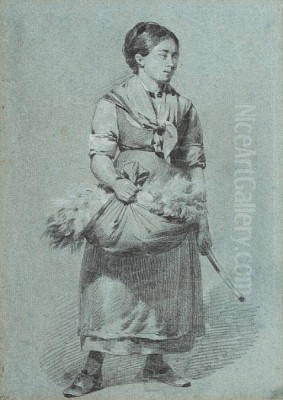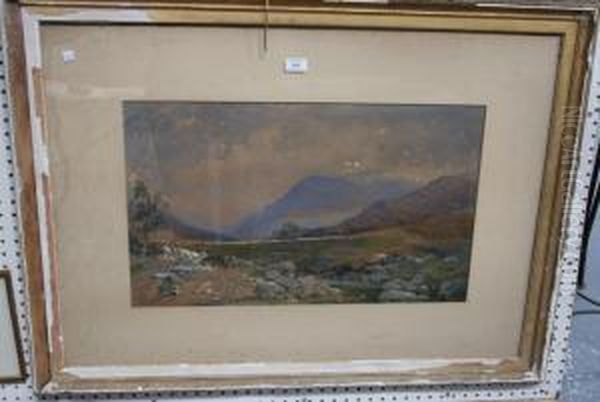
The annals of art history are rich with celebrated figures whose lives and works have been meticulously documented. Yet, alongside these luminaries exist countless individuals whose contributions, though perhaps noted in their time, have faded into relative obscurity. Thomas Sewell Robins appears to be one such figure, an artist whose name surfaces in connection with the esteemed Royal Academy of Arts in London during the early nineteenth century, yet whose broader career and specific artistic output remain enigmatic. Our understanding relies on fragments of information, primarily his documented entry into the formal structures of the British art world.
What is known with certainty is that Thomas Sewell Robins gained entry into the prestigious Royal Academy Schools in 1829. This was a significant step for any aspiring artist, as the RA Schools represented the pinnacle of artistic training in Britain at the time. Admission was competitive, and acceptance signified a level of recognised talent and potential. The schools offered invaluable opportunities, including drawing from antique casts and live models, access to lectures by leading Academicians, and the chance to compete for prizes and scholarships.
Sponsorship by James Northcote
Crucially, Robins's entry into the Royal Academy Schools was facilitated by the sponsorship of James Northcote RA (1746–1831). Northcote was a highly respected, albeit somewhat eccentric, figure in the London art world. A former pupil of the great Sir Joshua Reynolds, the first President of the Royal Academy, Northcote had established himself as a successful painter of portraits and historical subjects. He was also a prolific writer and conversationalist, famously documented in William Hazlitt's "Conversations of James Northcote, Esq., R.A."

Northcote's sponsorship is a vital clue. Patronage of this nature often indicated a belief in the student's abilities. It suggests that Robins had likely shown considerable promise, perhaps already producing work that impressed the elder Academician. Northcote, nearing the end of his long life in 1829 (he would die just two years later), was known for his sharp opinions and discerning eye. His support would have carried significant weight within the Academy's administration, smoothing the path for Robins's admission. The connection also places Robins firmly within the established lineage and traditions of British academic art, stemming directly from Reynolds through Northcote.
The Royal Academy Context in the 1820s and 1830s
Entering the Royal Academy Schools in 1829 placed Thomas Sewell Robins amidst a dynamic and evolving art scene. The era was a transition point. The towering figures of late Georgian and Regency Romanticism were still influential, while the seeds of Victorian art were being sown. Students at the Academy would have been immersed in the rigorous academic curriculum, focusing on mastering draughtsmanship, anatomy, and perspective, considered the essential foundations for 'high art', particularly historical and mythological painting.
The annual Royal Academy Summer Exhibition was the most important event in the London art calendar, a showcase where established Academicians and aspiring artists alike vied for critical attention and patronage. Success at the exhibition could launch a career. Students like Robins would have aimed to eventually exhibit their own works there, hoping to follow in the footsteps of their sponsors and teachers. The environment was one of intense competition but also immense opportunity for those who could distinguish themselves.
The London Art World of the Era
Beyond the Academy walls, London pulsed with artistic activity. The legacy of J.M.W. Turner (1775–1851) was undeniable; his dramatic, atmospheric landscapes and seascapes were pushing the boundaries of painting. John Constable (1776–1837), though perhaps less commercially successful during his lifetime compared to Turner, was profoundly influencing landscape painting with his naturalistic studies of the English countryside. His famous 'six-footers' were exhibited at the Academy during the preceding decade.
Portraiture remained a lucrative field, dominated by figures like Sir Thomas Lawrence (1769–1830), who had succeeded Benjamin West as President of the Royal Academy and whose glamorous style defined the era until his death. History painting, though considered the highest genre by the Academy, faced challenges in finding consistent patronage but was still practiced by artists like William Etty (1787–1849), known for his sensuous nudes and historical scenes, and Benjamin Robert Haydon (1786–1846), whose ambitious canvases often met with financial disaster.
Genre painting – scenes of everyday life – was gaining popularity, with artists like Sir David Wilkie (1785–1841) achieving enormous success with his detailed and often humorous depictions of rural and domestic life. Marine painting was also highly fashionable, reflecting Britain's maritime power, with artists like Clarkson Stanfield (1793–1867) and Edward William Cooke (1811–1880) rising to prominence. This was the vibrant, multifaceted world that Thomas Sewell Robins entered as a student.
Contemporaries and Peers
During his time at the Academy and in the subsequent years, Robins would have been aware of, and likely interacted with, numerous other artists. Besides the established giants like Turner, Wilkie, and Etty, a new generation was emerging. Sir Edwin Landseer (1802–1873) was already captivating audiences with his masterful animal paintings, often imbued with human-like emotions. Daniel Maclise (1806–1870), an Irish artist who came to London, would soon make a name for himself with intricate historical and literary subjects.
Other notable figures active during Robins's likely period of study and early career include David Roberts (1796–1864), famous for his topographical views, particularly of the Near East; William Powell Frith (1819–1909), who would later become renowned for his panoramic scenes of modern Victorian life like 'Derby Day'; Augustus Egg (1816–1863), associated with the Pre-Raphaelites and known for his moralising narrative works; and Richard Parkes Bonington (1802–1828), whose tragically short career produced brilliant landscapes and historical scenes admired for their freshness, though he died just before Robins entered the RA. John Martin (1789–1854) also continued to produce his dramatic, apocalyptic landscapes and biblical scenes. Charles Lock Eastlake (1793-1865), later President of the Royal Academy and first Director of the National Gallery, was also a significant figure as both painter and administrator.
Potential Artistic Directions
Given his entry point through James Northcote and the Royal Academy curriculum, it is plausible that Thomas Sewell Robins initially pursued history painting or portraiture, following the academic hierarchy. Northcote himself excelled in these areas, and a protégé might naturally gravitate towards his sponsor's specialisms. The rigorous training in life drawing and anatomy provided at the RA Schools was primarily geared towards figurative compositions.
However, the art market and prevailing tastes were shifting. Landscape and marine painting offered viable career paths, as demonstrated by the success of Turner, Constable, Stanfield, and others. Genre painting, championed by Wilkie, was also increasingly popular with middle-class patrons. Without documented examples of Robins's work, it is impossible to say definitively which path he chose, or if he specialised at all. He might have attempted various genres, as many artists did, seeking commissions or hoping to catch the eye of critics and buyers at the annual exhibitions.
It is also conceivable that Robins pursued work in illustration or other related fields. The period saw a boom in illustrated books and periodicals, providing opportunities for artists skilled in drawing. His sponsor, Northcote, had himself produced illustrations, notably for his 'One Hundred Fables, Original and Selected'. This remains speculative, however, in the absence of concrete evidence linking Thomas Sewell Robins to specific publications or artworks.
Challenges in Documentation and Identity
A significant challenge in researching Thomas Sewell Robins lies in the scarcity of readily available records beyond his RA admission. His name does not prominently feature in standard art historical surveys or exhibition records of the period in the way that his more famous contemporaries do. This suggests his career may not have reached the highest levels of public recognition, or that his works have been lost, destroyed, or perhaps misattributed over time.
Furthermore, the passage of time and the commonality of names can lead to confusion. It is crucial to distinguish Thomas Sewell Robins, the early nineteenth-century artist associated with James Northcote and the Royal Academy, from other individuals who might share similar names in different eras or fields. For instance, some modern databases or sources might erroneously link the name to vastly different contexts or creative outputs. One source reviewed in preparation for this overview confusingly listed works such as the films Pacific Rim, The Hobbit: An Unexpected Journey, The Lord of the Rings: The Return of the King, television series like House M.D. and Mystery 101, and other screen productions (Deranged, Assassinaut, Con Man) under the name Thomas Robins. These clearly belong to a different individual, likely an actor or someone involved in the contemporary film and television industry, and bear no relation to the historical painter Thomas Sewell Robins. Such conflations highlight the importance of careful verification when dealing with less-documented historical figures.
The primary reliable data point remains his 1829 entry into the RA Schools under Northcote's wing. His subsequent career path, artistic style, specific body of work, and even his dates of birth and death require further dedicated research, potentially involving deeper dives into Royal Academy archives, period exhibition catalogues, census records, and regional art collections where his work might possibly reside unrecognised.
Legacy and Conclusion
Thomas Sewell Robins represents a fascinating yet frustrating case study in art history: an individual documented at the threshold of a promising career within Britain's premier art institution, sponsored by a notable figure, yet whose subsequent journey remains largely untraced in mainstream accounts. His story underscores the reality that for every Turner, Constable, or Landseer whose fame endures, there were many other talented individuals navigating the same artistic world, contributing to its fabric in ways that are now difficult to fully reconstruct.
His connection to James Northcote provides a tangible link to the core traditions of the Royal Academy, stretching back to Reynolds. His entry in 1829 places him at a pivotal moment in British art, witnessing the height of Romanticism and the dawn of the Victorian era. While we lack the specific details of his paintings or his later life, his documented beginning serves as a reminder of the vast ecosystem of artists, students, teachers, and patrons that constituted the art world of the time. The potential for rediscovery remains, perhaps in a dusty archive or a private collection, waiting to shed more light on the life and work of Thomas Sewell Robins, the artist sponsored by Northcote. Until then, he remains a name associated with potential, standing at the entrance of the Royal Academy, poised for a career whose details history has yet to fully reveal.